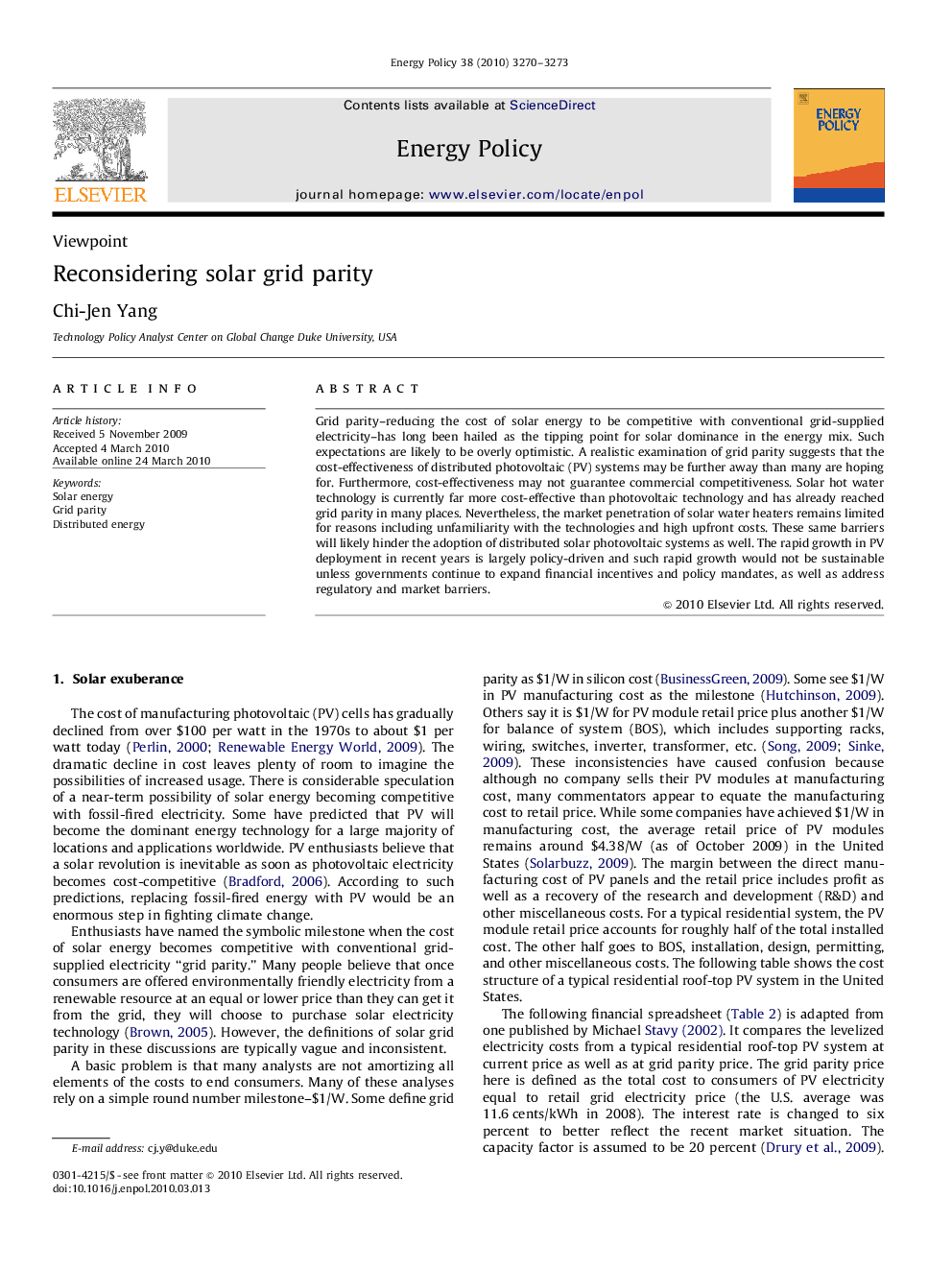| Article ID | Journal | Published Year | Pages | File Type |
|---|---|---|---|---|
| 993282 | Energy Policy | 2010 | 4 Pages |
Grid parity–reducing the cost of solar energy to be competitive with conventional grid-supplied electricity–has long been hailed as the tipping point for solar dominance in the energy mix. Such expectations are likely to be overly optimistic. A realistic examination of grid parity suggests that the cost-effectiveness of distributed photovoltaic (PV) systems may be further away than many are hoping for. Furthermore, cost-effectiveness may not guarantee commercial competitiveness. Solar hot water technology is currently far more cost-effective than photovoltaic technology and has already reached grid parity in many places. Nevertheless, the market penetration of solar water heaters remains limited for reasons including unfamiliarity with the technologies and high upfront costs. These same barriers will likely hinder the adoption of distributed solar photovoltaic systems as well. The rapid growth in PV deployment in recent years is largely policy-driven and such rapid growth would not be sustainable unless governments continue to expand financial incentives and policy mandates, as well as address regulatory and market barriers.
